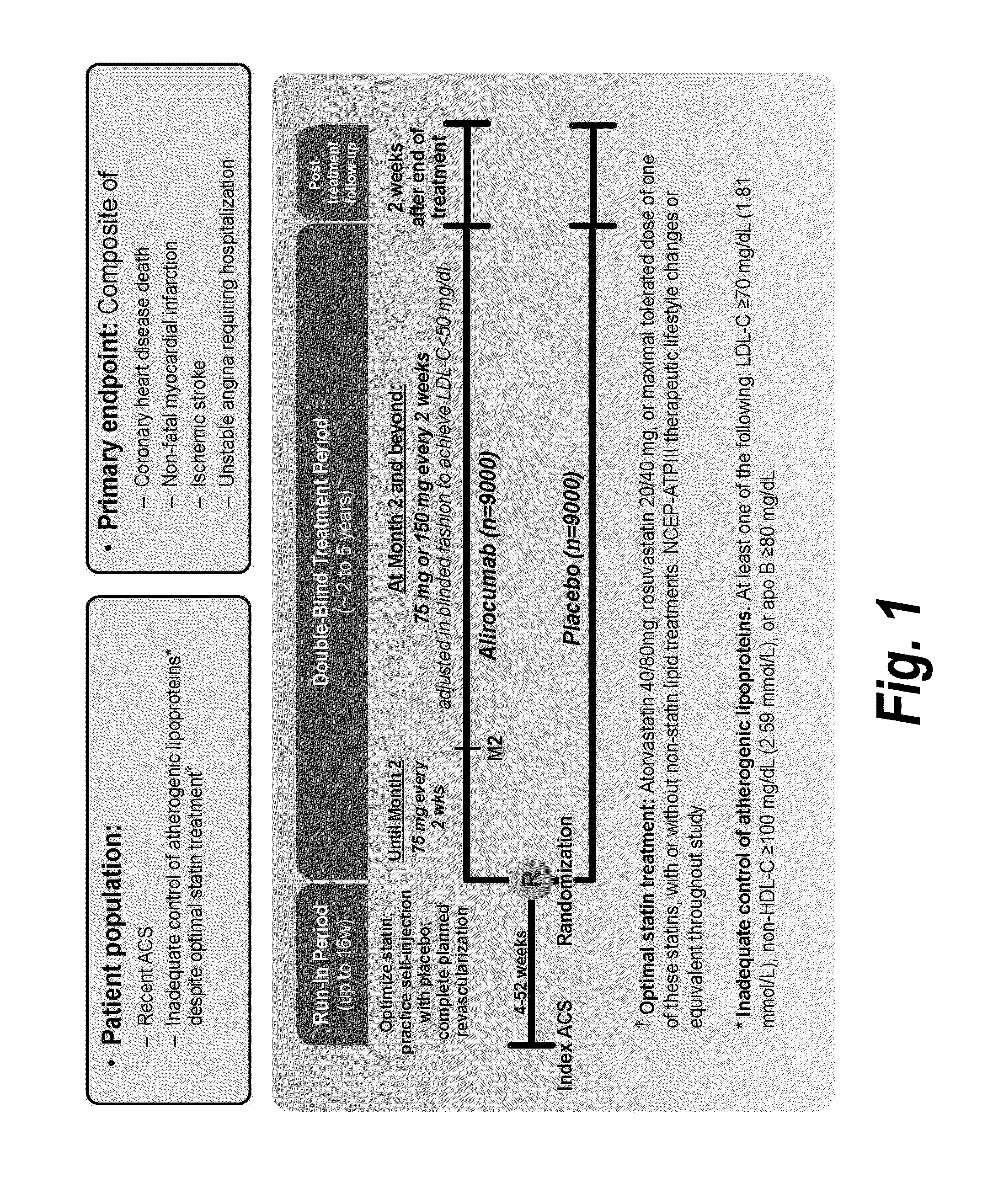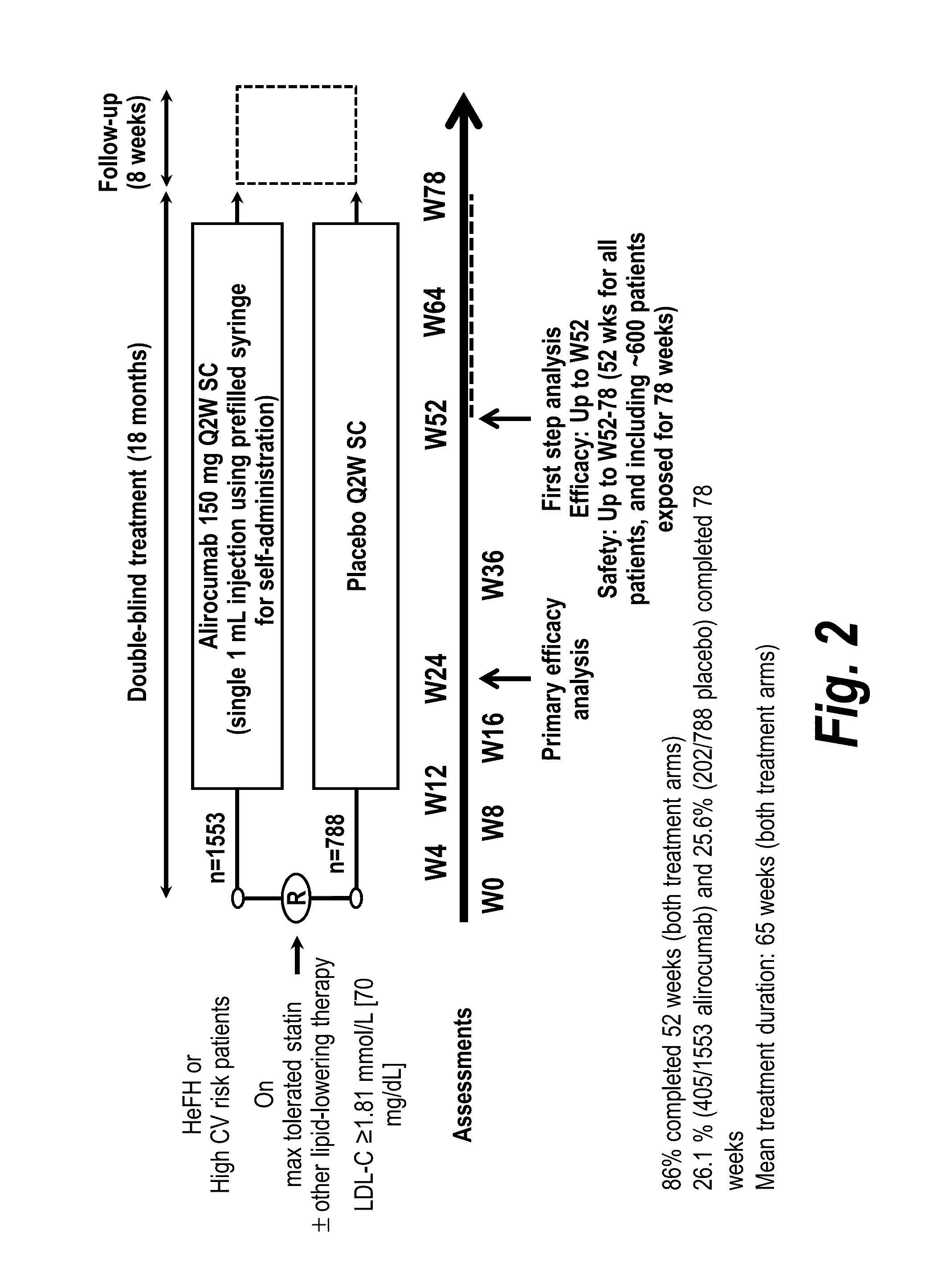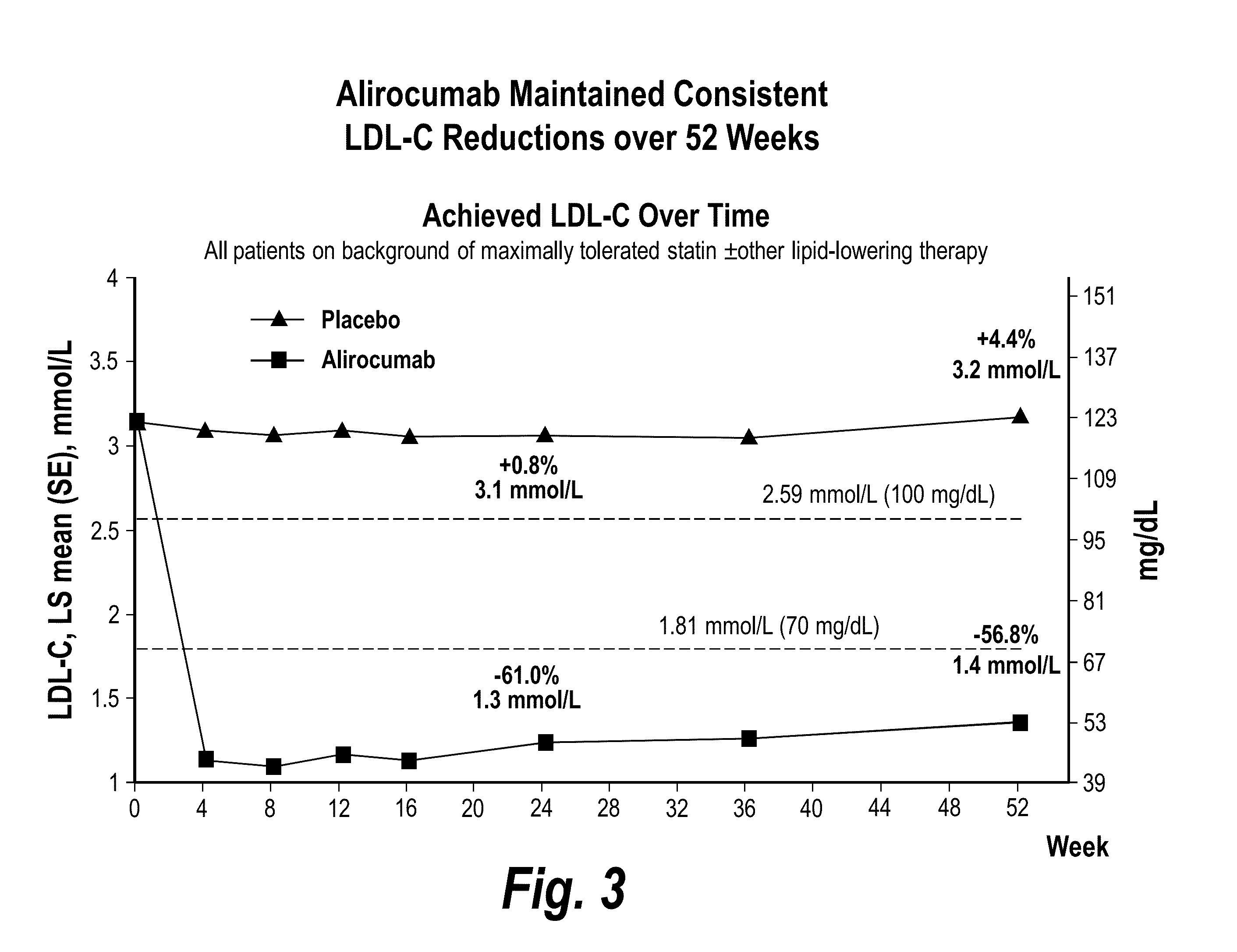Methods for reducing cardiovascular risk
- Summary
- Abstract
- Description
- Claims
- Application Information
AI Technical Summary
Benefits of technology
Problems solved by technology
Method used
Image
Examples
example 1
Generation of Human Antibodies to Human PCSK9
[0103]Human anti-PCSK9 antibodies were generated as described in U.S. Pat. No. 8,062,640. The exemplary PCSK9 inhibitor used in the following Example is the human anti-PCSK9 antibody designated “mAb316P,” also known as “Alirocumab.” The mAb316P has the following amino acid sequence characteristics: heavy chain variable region (HCVR) comprising SEQ ID NO:1; light chain variable domain (LCVR) comprising SEQ ID NO:6; heavy chain complementarity determining region 1 (HCDR1) comprising SEQ ID NO:2; HCDR2 comprising SEQ ID NO:3; HCDR3 comprising SEQ ID NO:4; light chain complementarity determining region 1 (LCDR1) comprising SEQ ID NO:7; LCDR2 comprising SEQ ID NO:8; and LCDR3 comprising SEQ ID NO:10.
example 2
Effect of Alirocumab, a Monoclonal Antibody to PCSK9, on Long-Term Cardiovascular Outcomes Following Acute Coronary Syndrome
Introduction
[0104]Statins have been approved for clinical use since 1987. Since that time, no lipid-modifying therapy has been proven to improve cardiovascular outcomes on a background of statin treatment. However, the treatments tested to date, including niacin, fenofibrate, ezetimibe, pioglitazone, and dalcetrapib, have modest effects on LDL-C. Inhibition of PCSK9 provides an opportunity to test whether substantial further reduction of LDL-C and other atherogenic lipoproteins can provide further improvement in cardiovascular outcomes beyond those afforded by statins.
[0105]This study will determine whether alirocumab, a fully human monoclonal antibody to PCSK9, reduces cardiovascular risk when added to optimal statin therapy. Patients with recent Acute Coronary Syndrome were chosen as the study population because they face a higher risk of recurrent events tha...
example 3
Long-Term Safety and Tolerability of Alirocumab in High Cardiovascular Risk Patients with Hypercholesterolemia not Adequately Controlled with their Lipid Modifying Therapy: A Randomized, Double-Blind, Placebo-Controlled Study
Introduction
[0128]This study was undertaken to assess the long-term safety and tolerability of alirocumab in patients at high cardiovascular risk who are not at LDL-C goal. This population that is not at LDL-C goal on optimized LMT represents a highest risk group with a well identified unmet medical need that can be addressed by adding alirocumab to their LDL-C modifying therapies. Two sets of results are reported: (1) a pre-specified interim analysis was performed when all patients reached one year and approximately 25 percent of patients reached 18 months of treatment; and (2) the final analysis of the safety population, when all patients had completed the study.
Study Objectives
[0129]The primary study objective was to evaluate the long-term safety and tolerabi...
PUM
| Property | Measurement | Unit |
|---|---|---|
| Time | aaaaa | aaaaa |
Abstract
Description
Claims
Application Information
 Login to View More
Login to View More - R&D
- Intellectual Property
- Life Sciences
- Materials
- Tech Scout
- Unparalleled Data Quality
- Higher Quality Content
- 60% Fewer Hallucinations
Browse by: Latest US Patents, China's latest patents, Technical Efficacy Thesaurus, Application Domain, Technology Topic, Popular Technical Reports.
© 2025 PatSnap. All rights reserved.Legal|Privacy policy|Modern Slavery Act Transparency Statement|Sitemap|About US| Contact US: help@patsnap.com



